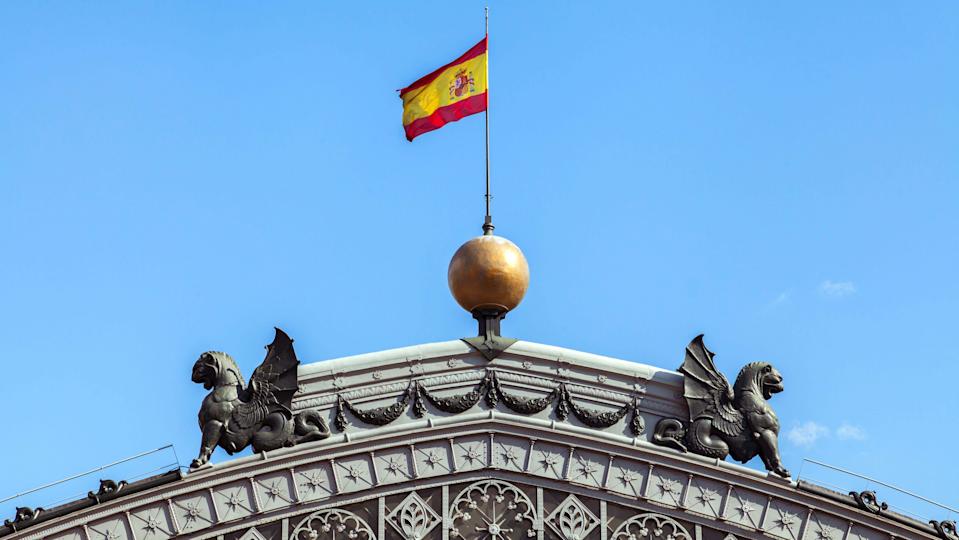As Sir Keir Starmer marks a year in Downing Street, a former Labour leader has suggested the prime minister should consider “asset taxes” for the wealthy as a way to regain support.
Lord Neil Kinnock said that while the government is working towards “a series of really commendable and absolutely essential policies”, they are “barely noticed” amid fury over cuts to the winter fuel payment, controversial welfare reforms and continuing with the two-child benefit cap.
He said that a “cloud hangs over the accomplishments of the government… and people are not getting the message”, with Labour trailing in the polls to Nigel Farage and Reform UK.
Kinnock told Sky News’ Sunday Morning With Trevor Phillips programme that there are things the party could do that “would commend themselves to the great majority of the general public”, including “asset taxes”.
“By going for an imposition of 2% on asset values above £10 million, say, which is a very big fortune, the government would be in a position to collect £10 billion or £11 billion,” he said.
Conservative shadow chancellor Sir Mel Stride said he thought a wealth tax would be “the worst thing to do” and opposed the idea of “piling further taxes on the wealth creators”.
One common argument against wealth taxes is that they drive wealthy people to other countries, meaning less tax collected, but how true is this?
Here, Yahoo News takes a look at other countries in Europe with forms of a wealth tax to see what the impact has been.
Norway
Norway has a net wealth tax, which is defined by American non-profit the Tax Foundation as “taxes on an individual’s or family’s net assets levied on an annual basis”.
In 2023, the Guardian reported that a record number of super-rich Norwegians were leaving the country after the maximum wealth tax was increased to 1.1%.


A Norwegian flag hangs over a yacht in Bergen. (Alamy)
Ole Gjems-Onstad, a professor emeritus at the Norwegian Business School, told the newspaper he estimated that those who left the country had a combined fortune of at least NOK 600bn (£43.6bn).
In 2025, Alex Recouso, co-founder and chief executive of CitizenX, a private platform helping people find and fund places that will accept them as citizens, put the number at around £39.5bn. He told Australia’s Daily Telegraph that this had resulted in a lost £435 million in yearly wealth tax revenue.
Norway’s municipal wealth tax rate is 0.525% and is calculated based on global assets exceeding a net threshold of NOK 1,760,000 (around £128,000) for single/not married taxpayers and NOK 3,520,000 (around £256,000) for spouses, according to PwC.
The state wealth tax rate is 0.475% and is calculated based on assets exceeding a net capital tax basis of NOK 1,760,000 (around £128,035) for single/not married taxpayers and NOK 3,520,000 (around £256,000) for spouses. For net wealth in excess of NOK 20,700,000 (around £1.5 million), the rate is 0.575%. These levies combined brings the maximum wealth tax rate to 1.1%.
Switzerland


A sign of Swiss bank Credit Suisse is seen near a Swiss national flag in Zurich. (Getty Images)
While many rich Norwegians were reported to have moved to Switzerland, the Alpine country has a wealth tax system of its own.
Its tax is levied annually at a regional level and accounts for around 3.8% of the state’s annual income, according to the Financial Times.
However, the newspaper points out that on the whole, tax in Switzerland is low, varying from canton-to-canton, with the top federal rate at just 11.5%.
There is also no inheritance tax at a federal level, although some cantons have their own. This could explain why Switzerland has not had the same exodus of the super-rich as Norway.
Spain
Spain taxes its residents on its worldwide assets valued at over €700,000 (around £604,000), according to Sublime Spain, a company that helps support people’s work and life in the Mediterranean country.
However, some autonomous regions including Catalonia have a lower level of €500,000, while some don’t have any wealth tax.
Percentages vary depending on how much you have in assets, but generally, the wealth tax in Spain is between 0.2% and 2.5%.


Gains from Spain’s wealth taxes appear to be modest, but there is limited evidence of rich people leaving the country because of it. (Getty Images)
Spain’s central government also introduced a nationwide “solidarity wealth tax” in recent years, ranging from 1.7% to 3.5% on people with net assets exceeding €3 million (around £2.6 million).
The Tax Justice Network, a British advocacy group, holds up Spain as a shining example of how wealth taxes can work.
It suggests that other countries can raise $2.1 trillion a year by following the example of Spain’s “featherlight” wealth tax on the richest 0.5% of households.
Using the Spanish structure as a model for its study, the group suggests a tax rate of 1.7% is applied on wealth above the 0.5% threshold; a rate of 2.1% is applied wealth above the 0.1% threshold; and a rate of 3.5% is applied to wealth above the 0.05% threshold.
But how well has Spain’s wealth tax worked? A review by the Tax Foundation found that in 2022, wealth taxes represented 0.19% of GDP in Spain, compared to 1.19% of Switzerland’s. They accounted for 0.51% of the former’s total tax revenues and 4.35% of the latter’s.
In 2023, the new solidarity tax was reported to have raised €632 million in the year, the Budget Ministry said, compared to €1.8 billion raised from all taxes on large fortunes.
While these figures are not to be sniffed at, they are a small proportion of the £280.5 billion in total tax revenue raised by Spain that year, according to Ceic Data.
Read more
